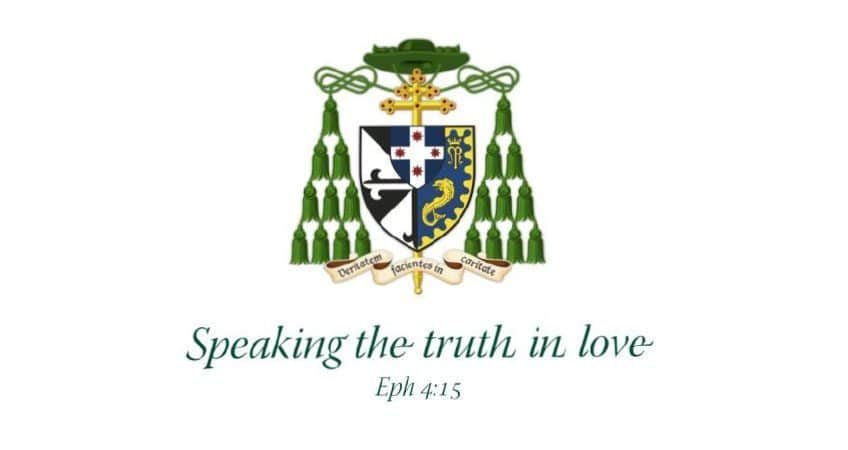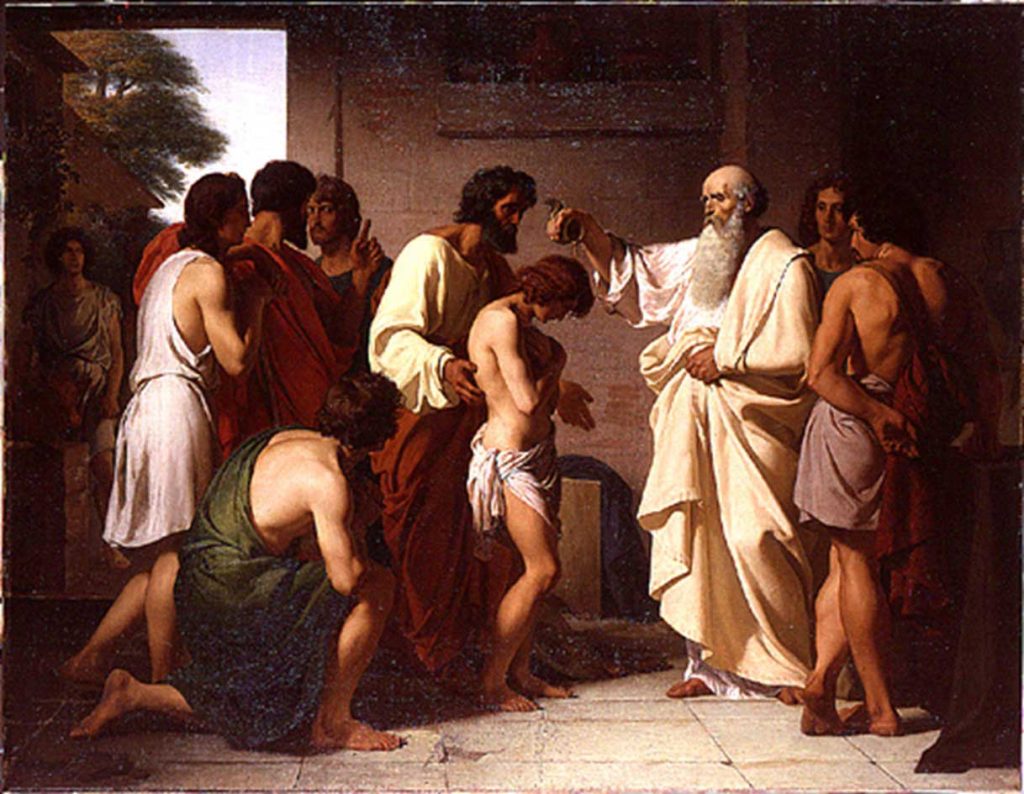Homily for Mass for the 4th Sunday of Lent (Laetare Sunday), Year A

St Mary’s Basilica, Sydney, 19 March 2023
Mr Beast is the YouTube moniker of 24-year-old American internet sensation, Jimmy Donaldson. After a youth misspent watching silly video clips, he decided to go viral himself with a series of outlandish stunts: going to the same fast-food outlet a thousand times in a row; building an exact replica of Willy Wonka’s Chocolate Factory; reading every word in the dictionary; eating a golden pizza worth $70,000; and being buried alive for 50 hours…
Donaldson’s videos have now been viewed hundreds of millions of times and, with over 130 million subscribers, he is the fourth most popular person in the YouTube universe.[1] And his current net worth is estimated around $100m. Yet Jimmy is also a philanthropist, and his organisation Beast Philanthropy seeks to alleviate hunger, homelessness and unemployment.[2] Just last week, he donated 20,000 pairs of shoes to poor students in South Africa.[3]
But Donaldson’s charitable works have not been uncontroversial. He has paid for a thousand people suffering cataracts to have the surgery to restore their sight. Problem is: he has filmed and YouTubed the reactions of some of them when at last they were able to see. This has led to accusations of ‘performative altruism’[4] and ‘stunt-philanthropy[5], suggesting he only does good to draw attention to himself and is exploiting desperate people in the process. His critics have even called him demonic![6] Others think it’s good to highlight charitable works, as it may encourage others to contribute. Fan or sceptic, you can’t get away from the fact he has helped a thousand blind people see, which is no small thing.

Victor Biennoury, Samuel anoints David (1942) Beaux-Arts de Paris
Today’s Scriptures point to a kind of spiritual, emotional or moral blindness that can be every bit as powerful as physical blindness. In our first reading (1Sam 16:1-13), Samuel is sent by God to the House of Jesse to anoint a new ruler for Israel. He presumed God wanted a powerful warrior-king and so his eye lighted upon Eliab, a sort of NRL man-mountain. But God says to him: look beyond appearance and scale. Seven sons later and Samuel still wasn’t satisfied. But then the youngest and scrawniest kid appeared, and he realised this was the shepherd boy God wanted to shepherd Israel. God chooses the weak and makes them strong. Samuel took the sacred chrism and anointed young David on the spot; as if a sacramental Confirmation as much as a Coronation, the youth was immediately seized by the Holy Spirit who stayed with him all his life.
If even Samuel the holy man had to learn to take a more spiritual perspective on things, so do we all. The ancients saw intimations of God all around them, as do people today from more traditional societies. For the medievals the sun and stars, rain and rainbows, harvests and newborns, animals and plants, everything beautiful in creation pointed towards the Creator. When St Patrick saw three leaves in one clover, it immediately evoked for him the Holy Trinity. When missionaries to South America saw that the flower of a particular fruit vine had a cross shape in it, they called it the Passionfruit. They thought the three stamens represented the three nails with which Jesus was crucified, and the five anthers His wounds. The threads of the flower reminded them of the Crown of Thorns, and the tendrils of the whips that scourged Him. In other words they could see the graced and spiritual all around them. But desacralised modernity only acknowledges that which can be seen, measured, controlled, and ideally exploited. Like Samuel at first, we perceive only what’s on the surface.
The Pharisees in our Gospel today (Jn 9:1-41) are a case study in misperception: in their spiritual blindness they fail to see God active in their midst. A blind man is healed, but all they see is their laws being flouted. God breaks into history with His astonishing grace, and all they notice is that it’s the wrong day of the week for that sort of thing. They cross-examine the man and interrogate the parents, but fail to perceive the bleeding obvious. We too can fail to take a spiritual perspective: like the cynics who dismiss the Beast as stunt philanthropy, we can negate man’s charity and God’s goodness. None are so blind as those who will not see (cf. Mt 13:14-15).
It wasn’t just the Pharisees who had their vision issues. Jesus’ own disciples are especially obtuse. If the guy was born blind, they think, it must be due to some sin that he was going to commit or that his parents had committed already. Christ teaches them to see natural evils, such as diseases and disasters, not as punishment so much as opportunity—opportunities for God’s glory and man’s charity to be manifested, for the eyes of faith to be opened. But like the disciples, we can be quick to blame and slow to see the big picture. None are so blind…
There’s a third group with sight problems in our story: the blindman’s parents and friends association. They know very well that he’d always been blind and now can see. But they don’t want any trouble. They look away, resisting that which might discomfort, subvert and convert them. They renew the marginalisation of the man born blind. They refuse to stand up and speak for what God has done. None are so blind as those who will not see.
Fourthly, there’s the blindman himself. Ironically he’s the only one who can see straight. At first he doesn’t recognise Christ for who He is, but his heart and mind are open. Christ sets in motion his healing, anointing his eyes with clay as an echo of the creation of man and nodding towards the cleansing of Baptism by instructing him to go wash in Siloam as a premonition of Baptism, the man starts to ask and be asked about Christ. Things start to clarify as he receives and gives his own answers. Excommunicated by the Pharisees as a presumed sinner since his birth, he’s dismissed again as a presumed liar. But gifted first with physical sight from his encounter with Christ, he returns to be graced this time with second sight, insight, spiritual sight. First, he sees and names Christ as “the man Jesus”, then as “a prophet”, then as “the Son of Man”, and finally as the One worthy of his worship. His spiritual eyes were gradually opened.
“Do you believe in this Jesus guy, this Prophet, this Son of Man?” the blindman in each one of us is asked this morning. Do you have faith and trust in God? Do you look at the world and see intimations of God all around you? We waver in our answers to this. Sometimes we look but we don’t see. Sometimes we don’t even look. Sometimes we see but then judge falsely: that good is evil, darkness light, charity pointless. But secular sight leaves our minds unpersuaded and our hearts restless. We need spiritual perspective also. With the blind seeker we say: “Tell me who he is, that I may believe in him” (Jn 9:36). With Paul we pray: “Lord, let me see the light, the light from light, true God from true God, the light of the world” (cf. Eph 5:8-14).
[1] https://www.edigitalagency.com.au/youtube/top-10-youtube-influencers-in-the-world/
[2] https://www.beastphilanthropy.org/about/
[3] https://news.yahoo.com/mrbeast-pushing-back-against-criticism-185041169.html?guccounter=1&guce_referrer=aHR0cHM6Ly93d3cuZ29vZ2xlLmNvbS8&guce_referrer_sig=AQAAAJhFZKBFDNvIVl_BFdt4GOpmZ6FleqRNdlvfjkp68FXQeeOHhekCI5FpbBY1M32ni4b3PwG7cyCvzA4hC4jvz9ZrkltGGGKpY41bDZsugwLJNUxD2VxhIpj7UgaQA90RhBchKGqADqt3MEhfbLrQI0-PQj0REObnCU8LtBaS_UsJ
[4] https://www.usatoday.com/story/life/health-wellness/2023/02/01/mrbeast-cures-blind-people-video-why-its-receiving-backlash/11161719002/
[5] https://www.businessinsider.com/mrbeast-youtube-jimmy-donaldson-net-worth-life-career-challenges-teamtrees-2019-11
[6] https://www.forbes.com/sites/danidiplacido/2023/01/30/mrbeast-cured-the-blind-and-sparked-a-fierce-ethics-debate/?sh=464ea7eb214d
Introduction to Mass for the 4th Sunday of Lent (Laetare Sunday), Year A – St Mary’s Basilica, Sydney, 19 March 2023
Welcome to St Mary’s Cathedral in Sydney for the Solemn Mass of the Fourth Sunday of Lent or Lætare Sunday. Recognising today what impatient creatures we are, the Church pauses the purple penance of Lent and looks forward with rosy joy to Easter. In our entrance antiphon we joined the Prophet Isaiah in singing: “Rejoice Jerusalem, and all who love her. Be joyful, all who were in mourning” (Isa 66:10).
This morning I have the added joy of admitting three new choristers to the St Mary’s Cathedral Choir: Matthew Chen, Henry Vincent Hull and Odin Williams. They now share their talents with the oldest musical institution in the country, assisting all of us in rejoicing in the Lord. Along with them, I welcome their parents, family and friends.
That we might be ready to rise with Christ at Easter, let us go down with Him into the tomb as we confess our sins…

